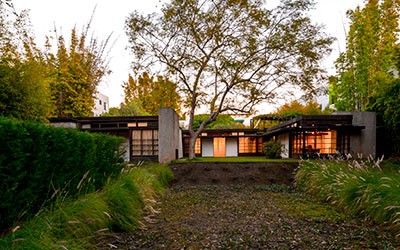Feb 17 2017 - Feb 26 2017
MAK Center for Art and Architecture
West Hollywood, CA
Berlin-based artists Petrit Halilaj and Alvaro Urbano have reflected critically on the perpetually negotiated conflict between the built environment and nature that is so inherent to Los Angeles. Their primary focus has been on the space of the garden and the alley, as mediator-spaces between the architecture and the wild—while Angelenos may not live in nature and while animals and the elements may not reside inside physical structures, the gardens and alleyways of Southern California act as neutral territory, as green zone across suburbia traversed and occupied by both humans and nature alike. In this ongoing “battle,” one agent of nature remains a master of reconnaissance: the raccoon. A mammal occupying a grey zone—it’s not quite a rat, but certainly not a house cat—raccoons are assumed city-dwellers, and rarely thought of as forest creatures. They tend to dart quickly through urban space under cover of night, digging though trashcans for our refuse and secrets. Visitors to the Schindler House in the first two weeks of February will encounter the artists in costume, living as raccoons themselves in preparation for Final Projects, where sculptures and an installation will highlight the work of this well-known but under-recognized Californian critter.
For Final Projects, King will refer to ideas of these garden spaces, also widely found in the Internment Camps of the 1940s. This history of Japanese-American citizens remains physically and mentally outside of forgetful L.A., and King has studied the gardens that formed shared social experiences constructed by internees at places like Manzanar, nestled between the forbidding Death Valley and Mount Whitney. Visitors to the exhibition will encounter garden spaces on the property, conflating and complicating the mid-twentieth century mistreatment of Japanese-Americans with Los Angeles’s impulse to freely appropriate elements of Japanese landscape design for private gardens.
Since arriving in Los Angeles last autumn, Vienna-based, Ukraine-born artist Anastasiya Yarovenko has asked “how” one is supposed to be in the city: Is L.A. only for owners of private property? Is L.A. only for those with keys to an apartment? Or, is it an environment, which can be inhabited however one is able? Are the homeless not residents of the city as well? One needs only to read headlines in the Los Angeles Times, to see the actions of those who would answer the last question with “No.” Every week, the city’s ceaseless ticketing, regulating, shuffling, and policing of homeless Angelenos makes it clear that local authorities feel very strongly that there are right and wrong ways of being in Los Angeles.
Yarovenko’s work considers how one’s body negotiates such legislation, how L.A.’s hostility towards the homeless is made manifest. Dimensional restrictions control physical property and the space one is able to occupy. Visitors to the exhibition will engage with a sculptural and text-infused installation in the Mackey Garage Top, which prompts them to interact with the physicality of transience in Los Angeles.
Credit: Exhibition overview from museum website.
Exhibition Venues & Dates
Feb 17 2017 - Feb 26 2017
MAK Center for Art and Architecture
West Hollywood, CA
